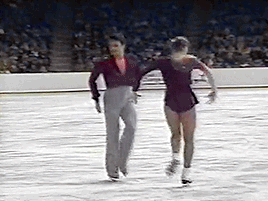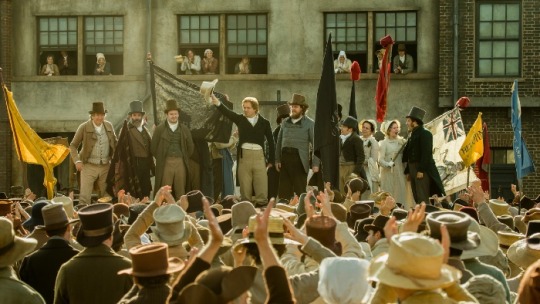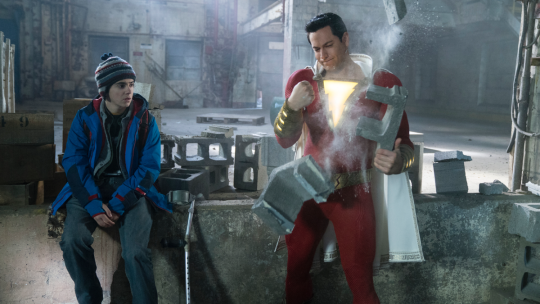#hes technically not even retired but he only plays in america and his only European concert is in Cardiff
Explore tagged Tumblr posts
Text
I love listening to songs on Spotify that come directly from a live concert because most people I listen to are dead or retired and I'm never gonna get to feel the concert vibe for them
#currently listening to a playlist of billy joel concert songs#hes technically not even retired but he only plays in america and his only European concert is in Cardiff#which is both expensive as fuck at a pain to get to#so no live billy joel for me </3#dont even get me started on queen#watching their live aid (1985) show on YouTube gives me life#bibliophile-bi
2 notes
·
View notes
Photo










It’s Pride month, so let’s celebrate some of our LGBT skaters! Well, at least in this gifset, G and B skaters; there aren’t yet any out L or T skaters at the elite level, although they do exist at the adult and of course recreational levels.
Figure skating, at least in the US, is often stereotyped as a ‘gay sport’, and many skaters have said that despite their trepidation before coming out, they experienced support from their fellow athletes. However, I think events this month have reminded us that homophobia and transphobia remain problems that need to be addressed in the sport. That being said, there have been more out skaters than can be shoved into a single gifset (or even two). Featured here:
Amber Glenn (2019 Cup of China SP) - Glenn is the 2019 US Classic bronze medalist and a US junior champion. She is a lovely and emotional skater. In late 2019, after having added LGBTQ activism as a hobby in her ISU profile, she came out as bi/pan. This made her, as far as I am aware, the fourth elite woman skater to ever come out, and she is currently the only out woman competing at the elite level.
Toller Cranston (1976 Worlds LP) - Cranston was a six-time Canadian champion and Olympic and Worlds bronze medalist. He was well-known for his inventive programs with an unusual level of creativity and flexibility for his day, which helped to push the sport forward artistically and influenced younger skaters. At the 1976 Olympics, after his poor figures score, he tossed his skates in a river out of frustration before going on to win the bronze medal. Cranston was also an off-ice artist who supported his skating career by painting, and in 2013, he became the official artist of Skate Canada. He was bisexual and wrote about having both male and female lovers. In 2015, he passed away due to a heart attack.
Brian Pockar (1982 Canadian Nats LP) - Pockar was a three-time Canadian champion and Worlds bronze medalist. His signature move was a spread eagle directly into a triple salchow. He also at one point attempted a one-foot triple salchow (a counter-clockwise jump landing on the left rather than right foot) double flip combination. After retiring, he worked in shows and as a commentator, though he is alleged to have lost his commentating job due to coming out as gay. He passed away due to AIDS in 1992.
Randy Gardner (1979 NSA Centenary Gala) - With his partner Tai Babilonia, Gardner was a five-time US champion and World champion in pairs. As a pair, they were known for their grace and for their strong unison, and for their striking series of paired Arabian/butterfly jumps. Increasingly out in his private life after turning pro, Gardner was reluctant for some time to come out publicly due to the AIDS crisis and backlash against other gay athletes. He decided to do so in 2006. He now does choreography and coaching, and his life story was recently adapted to a play and later a documentary, both called Go Figure.
Rob McCall (1982 Canadian Nats FD) - McCall was a seven-time Canadian ice dance champion and Olympic bronze medalist with his partner Tracy Wilson. The pair combined creative talent with technicality, and McCall was popular with other skaters because of his bright sense of humor and cheer. He passed away in 1991 due to AIDS. In the last months of his life, he planned a skating show to raise money for AIDS research, hoping that speaking of his illness would aid others and fight fear, though the show ended up being carried out by his friends after his death.
Brian Orser (1988 Olympics SP) - Orser was an eight-time Canadian champion, World champion, and two-time Olympic silver medalist. He was known for his ability to jump triple axels, even near the end of a long program, and became the second man to ever land a triple axel in competition, the first to land one at the Olympics, and the first to land two of them in a long program. In addition to his technical abilities, he was also an expressive and entertaining skater. In 1988, he faced off against another gay Brian, Boitano, in the ‘Battle of the Brians’ for Olympic gold. He is now a well-known coach of several high-profile skaters.
Matthew Hall (1986 Skate America LP) - Hall was a bronze Canadian national medalist. In 1992, he was one of the first elite skaters (one source says the first) to come out as gay while still competing; he did so in response to the death from AIDS of several fellow Canadian skaters. Although he had taken a break from competitions at the time, he found he couldn’t leave skating entirely and came back a couple of years later in a bid to make the 1994 Olympic team. He won the 1994 Gay Games figure skating event despite having cracked his ribs a few days before performing.
Guillaume Cizeron (2018 Olympics FD) - With his ice dance partner Gabriella Papadakis, Cizeron is an Olympic silver medalist, four-time World champion, five-time European champion, and six-time French champion. The pair are known for their beautiful skating skills and graceful style, and Cizeron has spoken of how they want to do programs that go beyond the defined roles of man and woman that are traditional in skating. He very recently decided to speak publicly about being gay for the first time in honor of International Day against Homophobia and Transphobia.
Ronnie Robertson (1956 Worlds LP) - Robertson was a two-time US nationals silver medalist, two-time Worlds silver medalist, and Olympic silver medalist. He was an excellent free skater who came extremely close to Olympic gold - it took the judges two hours of calculations to determine that he had lost by a fraction of a point. He was famous for his spins; his top speed was estimated to be seven spins per second, and NASA scientists studied him to try to help stop astronauts from getting dizzy when spinning in weightlessness. In addition, he was the first man to land a triple salchow in competition, and also landed a triple loop. He passed away in 2000 due to AIDS complications.
Edward van Campen (1994 Gay Games program) - van Campen was the three/four-time Dutch champion (the title was technically not awarded one year for some reason, though his name is still listed). He only started skating at 16; at his first Euros appearance six years later, he did so well that the federation changed their minds about not sending him to Worlds. He later skated in Ice Capades and now coaches. In his first appearance at the Gay Games in 1994, he won silver. There, he paid tribute to his twin brother and fellow skater René, who passed away in 1989 due to AIDS, by beginning his program with unfurling and draping himself with the AIDS memorial quilt panel made in honor of him.
108 notes
·
View notes
Text
EPISODE 4: DIETRICH, GARBO & OLD LIES
LISTEN: SOUNDCLOUD / iTUNES / GOOGLE PLAY
NOTES: We got a microphone for phone recordings and I learned editing. What a world.
SOURCES: listed at end of transcript
TRANSCRIPT:
Hi, I'm Jack and this is “Tuck In, We're Rolling: Queer Hollywood Stories”. This week we're going to be talking about Greta Garbo and Marlene Dietrich, and the so called “sewing circle” that constituted them and other queer women in early Hollywood. Before I get to that, though, I wanted to apologize for the very, very late episode. Life happened all at once with a million little fires to put out, so I had to reprioritize for a minute. I'm back now, though, and hopefully from here on in, it'll be smooth sailing and weekly episodes again. Thanks for sticking with me!
So, I wanted to start this week's episode out by talking about Katharine Hepburn, even though she isn't going to be the main focus. In our episode on Dorothy Arzner, I mentioned that my second favorite Katharine Hepburn story was the one where Arzner saw her up a tree and decided to cast her in Christopher Strong. I think it's time for my all-time favorite Kate story. I read this little tidbit in Gene Tierney's autobiography Self Portrait – definitely a recommended read, by the way. So, when Gene first came to Hollywood, she was introduced to Howard Hughes. Unlike most of the women that were introduced to him, she didn't start a sexual relationship with him, and instead he acted as a sort of patron to her – he very famously helped her get the best care for her daughter when she was born with some pretty severe congenital defects, but he also got her brother a summer job at his aircraft company. Butch Tierney flew out from the east coast and worked there for a summer, and he only met Hughes once. Hughes comes walking in one night when Butch is busy burning the midnight oil, and he's got this scraggly little street urchin with him. Butch honest to God thinks that Hughes has a little boy with him, and can't figure out why. They have a conversation, something quick to the effect of, “Well, Butch, how do you like the job?” “Fine, sir, just fine.” “Wonderful!” And Hughes leaves, the grubby ragamuffin in tow.
And then, later, Butch found out that the little boy was actually Katharine Hepburn.
Now, I tell this story because I want to examine Hepburn's androgyny as compared to the overt sexuality of Dietrich and the glamor of Garbo. I feel like all of these women had a certain androgynous quality to them, or at least something a little masculine mixed in with their femininity, but I think personally that Hepburn was the one that exuded that quality the most. Now, Hepburn is the only American of these three – she's actually from Connecticut, which is where I was raised. She was born on May 12, 1907 and she was a very affluent, educated young woman. She only married once, but she was romantically linked to people like Spencer Tracy and our boy Howard Hughes. I think it's kind of interesting that people whispered about her being primarily attracted to women, and she's linked up to these men who were thought to be bisexual.
The thing about Hepburn and Hughes being together that I want to point out, though, is that Hughes was attracted to her because she wasn't like most of the other starlets that he attached himself to. She was active, she was vibrant. She very deliberately dressed comfortably in trousers and never really went in for the glitz that was in vogue at the time. She was a golfer and she loved the outdoors – when Spencer Tracy first met her, he wasn't all that thrilled with the dirt under her fingernails and thought she was a lesbian. Shocker. And, you know, whatever kind of same-sex relationships Hepburn had in the past, it was really clear that she loved Tracy and wanted to take care of him and be there for him.
In any case, regardless of the nearly thirty-year relationship with Tracy, Hepburn is still the woman quoted as saying, “All men are poops.” I feel you, girlfriend. It's been posited that Hepburn fell more on the asexual scale, too; when it came to getting physical with her romantic partners, she notoriously disliked sex. I've found a source that says that when she said she didn't have a fling with John Ford, she wasn't lying, at least on a technicality. She was also a very private person, and as someone who grew up around a lot of well-bred Connecticut families, I don't think it's too far a stretch to say that this is something she definitely picked up from being around a bunch of tight-lipped, image-obsessed type of people. You know, here's a woman who's pretty consistently called the greatest actress of the 20th century, and she's rumored to have asked someone to get her some pretty brunnette escorts and liked to call herself “Jimmy”. In the end, she left most of her love-life and relationships a mystery – which is a fitting sort of thing for her to leave us with.
This brings us around to Greta Garbo and Marlene Dietrich. Garbo was born in Sweden on September 18, 1905. She's born into this pretty poor family, and she's really close to her father. She's this shy, sort of frumpy looking kid who just daydreams about getting out of the gray place that she remembers of her childhood. Her father died when she was 14, and it devastated her. She wanted to become an actress because she thought it would be posh, but she's kind of the misfit of her drama friends at the Royal Dramatic Theater's Acting School because she came from a poor family and she's a little strange. Our buddy Louis B Mayer brings her to America in 1925 because he gets fixated on her charm and her eyes, and if you've seen photos of Garbo, she really does have these beautiful, deep-set, striking eyes. She goes on to make a name for herself in silent films, and of course – she makes an even bigger name for herself in talkies.
Garbo is viewed as this other-worldly, beautiful, and tortured foreigner. People went nuts for her. There's a joke in the book The Sewing Circle about a husband and wife on their wedding night, and the groom says that he'll always be faithful, with one exception: Greta Garbo. And the wife turns to look at him and says, “Me, too.” She's also over at MGM Studios, and I don't know if I've really expressed yet that MGM was considered the 'prestige' studio. They did big budget pictures with big stars. They were the ones with people like Joan Crawford, Clark Gable, and Jean Harlow. MGM is the studio that gave us Gone With The Wind. I don't want to get too much into Garbo's filmography or I'd risk this episode turning into an IMDB entry, but I'll mention that she becomes known for playing women who make bad choices. She's lustful, she's dramatic, and she's one of the very few actors I've ever seen that could use their eyes to convey emotion without ever changing the expression on her face. She really is a sight to be seen.
So, if we hop on over to Paramount Studios, they're seeing Garbo's success and they start chomping at the bit. They want their own sexy European woman – which is really how the studios thought about their stars back then, they were just so much product – and their answer was Marlene Dietrich. Dietrich is, in a lot of ways, the opposite of Garbo. She was born four years earlier, on December 27, 1901 in Berlin. She's born into an affluent family – I think an article I read about her called it “Weirmacht nobility”, if I can recall – and she was going to become a concert violinist. She ends up as a chorus girl and works her way up to bit parts in German films, meeting her husband Rudolf Sieber along the way. They married in 1923, and she stayed in Germany until Josef Von Sternberg brings her to Hollywood in 1930, five years after Garbo, based on the success of The Blue Angel.
Dietrich is a little different than Garbo from the start. MGM made Garbo lose something like thirty pounds. They fixed her teeth and her hairline and plucked her eyebrows and gave her a full star treatment. Again, stars were really a product back then, and this is MGM fully marketing their product. You can see in photos of Garbo – she's a very stone-faced, cool-looking person, and she's got that voice! That husky, come-here-boy, voice. And then you have Dietrich. The woman oozes glamor. She's expressive. I like to think of her as expansive. She's totally in control of herself and everyone around her. I mean, this is the woman who wanted to take down the Third Reich by sneaking back into Germany and seducing Hitler. I'm not making that up. I think a lot of people point to her wild schemes like this – her answer to a problem was always 'sleep with it' – and they think she was some kind of unhinged sex maniac, but I think it's important to remember the times these two women were around in. Marlene was acutely aware of what she was capable of, and she knew what people would do for sex. She was using what she had to get what she wanted. I digress, but I also don't stand for people slut shaming dead actresses.
So, where does this leave us in our tale of the intersection of Garbo and Dietrich? The two claimed to never have met one another until 1945, at a party at Orson Welles' home. Welles was just beside himself – he wanted to be the one to introduce them. At this point, Garbo's success had started to plateau. She was pretty close to retirement, when she tucked in the edges of her already extremely closed-off private life and became a bit of a recluse. Dietrich's career was also at a plateau, but it was looking brighter, and she still had quite a few good films in her at that point. They're introduced to one another at the party, and Dietrich is radiant. She's excited. Dietrich says that Garbo is a goddess. Garbo mumbles, “Thank you” and walks away. Dietrich is pretty miffed about it. She passes a comment about Garbo's feet not being as big as everyone says, and everyone thinks that's the end of it.
The truth is: they didn't meet for the first time in 1945. They had actually met twenty years earlier when they both starred in a GW Pabst film called Die freudlosse Gasse, or “The Joyless Street”. The author Diana McClellan only noticed Dietrich after watching the film over and over – she couldn't identify Dietrich at first, because back when Dietrich was making movies in Berlin, she dyed her hair black. She's not credited in the movie, either, though Garbo has a title role. So, McClellan is watching this movie – and Dietrich and Garbo get pretty cozy in it. At one point, Garbo collapses into Dietrich's arms. Garbo would deny ever having met Dietrich before 1945 for the rest of her life, and it would take almost until Dietrich's death before she admitted that she had been in the movie, though she didn't for sure confirm anything about her relationship with Garbo.
So, why lie? McClellan posits a very convoluted answer involving Rudi Seiber's political affiliations, but she also points to Garbo's legendary secrecy. She was a very private person, so much so that if any of her friends spoke to the press about her, they were subsequently cut off from her life. Dietrich was a lot less careful about what she said, but I think it's worth noting that in a small world like mid-twenties German film, she might have felt more comfortable staying mum if Garbo did as well. In The Sewing Circle, Axel Madsen maintains that Dietrich and Garbo didn't meet until 1945, but he mentions that they shared a lover once they reached America: a writer named Mercedes de Acosta.
I had never heard of Mercedes de Acosta when I started digging into the research for this episode. She's a fascinating personality, and she ran with the likes of Dorothy Arzner and Salka Viertel – an Austrian actress and screenwriter who seemed to moonlight as a queer women's matchmaker and caretaker in early Hollywood. De Acosta was born in New York on March 1, 1893 to parents of Cuban and Spanish descent. De Acosta was the youngest of eight kids, and her mother dressed her up in masculine clothing and called her Rafael until one of the neighborhood boys asked to see what was between her legs. When Mercedes realized that she didn't have what the neighbor boy had, she demanded her mother to tell her the truth – was she a girl? She was devastated when her mother confirmed that she was, in fact, named Mercedes and not Rafael. And here we go back to this sort of androgyny, this kind of blurring of gender that occurs in these early queer women. Katharine Hepburn didn't like the word “lesbian” because she thought it was a word with very butch connotations – but still was a very masculine character herself. I keep thinking about this disconnect in the early 20th century, how people could engage in homosexual or homoromantic affairs but not ever consider themselves to actually be homosexuals. My roommate mentioned to me in a conversation a while back that so many people way back when didn't really have a word for what they were doing – it was just a thing they did. They didn't consider themselves “gay” the way that some people today identify with certain monikers. And to be sure, people like Josef von Sterberg went around telling actresses to definitely sleep with other women because it would make their art more believable, and maybe at least in Katharine Hepburn's case, she was so close to being asexual that she didn't want to pick a label because it would feel disingenuous – but this is all conjecture on my part.
So, Mercedes de Acosta. She's a writer, like I mentioned, mostly plays and a few novels. She eventually writes a memoir, which I'll get to in a little bit. She's introduced to Garbo through Salka Viertel in 1931, and she falls in love immediately. De Acosta is a bit of an anomaly, because, like Dorothy Arzner, she's out and she's proud. She has a husband, but they both know it's just to keep up appearances and they eventually divorce in 1935. Mercedes is so confident in her ability to snag any woman she wants that she brags about being able to get women away from their men. Besides Garbo and Dietrich, she has affairs with Pola Negri – who you might remember from our Valentino episode as the woman who threw herself onto his coffin when he passed away – Alla Nazimova, and the dancer Isadora Duncan. The Garbo thing, though – this is interesting – it's been said that the Garbo affair was “erratic” and volatile. This seems to be a pattern with Garbo, as I've heard the same thing said about her affair with John Gilbert – the only person who came close to marrying her, though she refused him over and over again. They would go through on-again, off-again phases, but they would remain more or less friends for thirty years.
Around 1940, de Acosta met Dietrich. Or, I should say, Dietrich found de Acosta sobbing under a table after hitting the skids with Garbo and they got together on the rebound. At this point, the two of them were lonely and dealing with their own issues, and that always makes for a pretty interesting combination. Dietrich, interestingly, preferred to have sex with women, but very tellingly said often, “You just can't live with a woman.” So she and Mercedes were also something of an on-again, off-again kind of thing. I think, in the grand scheme of the story, Mercedes and Garbo were the real item – and with Marlene being who she was, with her appetite for sex and her ability to find new lovers when the old one bored her, she ended up being the one that Mercedes would go to when things with Garbo weren't going so hot.
As these things go, Mercedes kept quiet about her relationships with Garbo and Dietrich until 1960. She was very ill, and she decided to publish her memoir under the title Here Lies the Heart. It comes out, and it doesn't hold back. A lot of people love the book, but Garbo officially breaks off their friendship. Now, remember, Garbo is the kind of person who would cut people off just for speaking to the press, so this isn't a huge surprise. One of Mercedes' former lovers, Eva Le Gallienne – sorry if I butcher that pronunciation, again, I don't speak French – goes ballistic and accuses her of making up stories. But not our good gal pal Marlene. Marlene double downs on their friendship and continues speaking to her regularly.
So, did Garbo and Dietrich deny knowing each other between 1925 and 1945 because of a tempestuous affair on the set of The Joyless Street? Did they decide to skirt one another because they were both involved with Mercedes de Acosta? Was it an insane Stalinist plot? I don't know. I like to think that it was some combination of the first two. Garbo seems to be a whirlwind, and Dietrich is cool as a cucumber. It probably wasn't a great mix. Combine that with the always convoluted queer dating pool, and it's a recipe for a personal disaster – but a wonderful hidden gem of queer Hollywood history.
Thank you for listening to Tuck In, We're Rolling: Queer Hollywood Stories. This episode was written, recorded and researched by me, Jack Segreto. You can find a transcript of this episode and all of our episodes, along with some fun facts and photos, on our tumblr, tuckinpodcast.tumblr.com. You can also give us a like on Facebook at facebook.com/tuckinpodcast. We accept messages on both of those platforms, so feel free to shoot us any suggestions for show topics or comments you might have. We put out new episodes every Wednesday, and you can listen to us on SoundCloud, iTunes and Google Play, so don't forget to rate and subscribe to us! Thanks again to everyone for being patient with me while I work on my own life and bullshit. You're the real heroes. We'll be back on Wednesday with an episode about Cary Grant and his husband. You heard that right. See you next time!
SOURCES:
The Sewing Circle, Madsen, Axel, 1995
The Girls, Diana McClellan
Self Portrait, Tierney, Gene, 1979
Wikipedia. Yes, I am a lazy sack of crap.
#( TRANSCRIPTS & SHOW NOTES. )#( EPISODE 4. )#queer history#hollywood history#queer history podcast#hollywood history podcast#new podcast#greta garbo#marlene dietrich#katharine hepburn#[ that's all i got my dudes i am exhausted#but check out my new creator bio that's a thing now ]
4 notes
·
View notes
Text
WHAT TO WATCH THIS WEEKEND April 5, 2019 - SHAZAM, PET SEMATARY, THE BEST OF ENEMIES, PETERLOO
Sadly, this is yet another weekend where I wasn’t able to see two of the three new movies, but that’s because I’m in Las Vegas covering CinemaConfor The Beat, but I do want to write a little more about a movie coming out this weekend that I want to put a little added focus on. Back in the day, I used to include a “Chosen One” in each week’s column, and I’m getting to the point where I’d like to try to do something like that again… and so, after the jump, you will get my review of one such film.

That movie is PETERLOO (Amazon), the new movie from director Mike Leigh, an eight-time Oscar nominee whose work has garnered him much respect and whose work I’ve especially enjoyed, particularly Vera Drake and Happy-Go-Lucky. The first of these is significant because it’s one of Leigh’s rare historic pieces but his last movie Mr. Turner went one further by telling the story of a real person, in that case, painter J.M.W. Turner, as played by Tim Spall.
Peterloo is somewhat of a departure for Mr. Leigh, since it isn’t focused on a small group of two to four characters, instead telling a massively complex storyline about a peaceful rally in Manchester that was racked by violence when politicians decided to disperse the crowd.
I have to admit that as Peterloo began on the battlefield of Waterloo, I wasn’t sure to expect, thinking it might be Leigh’s attempt at a war film, but the story follows a young bugler, Joseph, whom we see on the battlefield before he returns home to Manchester with a case of PTSD. His family, and in fact, the whole town, is suffering from poverty and hunger, and there’s a growing desire to be represented in the Parliament in London so that things might improve. The city’s grew white hope is one Henry Hunt, played by Rory Kinnear, and he’s going to travel up to Manchester to talk to the people who will presumably vote for him.
Once it gets going, Peterloo is such a fascinating film. I’m really curious to see how Americans will react to it, because while it’s just as typically British as Leigh’s previous work, it’s a movie that’s more about British history and British politics, and I’m just not sure if that’s the sort of thing that will connect with Americans.
I can completely understand why some might be frustrated with Leigh’s latest, because it is very long, it does take some time to get going, and a lot of time you might not know exactly what is going on or what is being discussed. I certainly wasn’t exactly sure what was going on or who some of the characters were as they flew through the vast ensemble cast moving from one character and location to another. Eventually, you get used to this pace and start seeing familiar faces that makes things much clearer. Leigh also uses this tactic to create layers that build and build to the climactic last half hour of the film where violence disrupts an otherwise peaceful day. It’s quite the counterpoint to the war scene that opens the film, but don’t worry. Joseph doesn’t get lost in the shuffle, as you might suspect, because it really follows his journey despite often focusing on others.
One of the things I especially liked about Leigh’s latest is that while it does often get somber and serious, there’s still a wit to it, especially in the way it deals with the stupidity of the politicians and magistrates who seem to have little care for the people they’re supposed to be representing.
Oddly, two days after seeing Peterloo, I saw the Broadway musical Hamilton, a historical piece that takes place in America earlier than the events of Leigh’s film, but it offered a similar resonance to me, even though it did so with musical numbers rather than talking.
Leigh’s screenplay is another masterpiece, but I was equally impressed by the casting of such a large ensemble, many with British actors whom few on these shores will have ever seen or heard of. I’m really curious to know where he found them, because he’s become so known for working with the same small group of actors over the years, and almost everyone in this movie is new to the Leigh camp.
Personally, I think this is Leigh’s best film in many, many years, possibly on par with some of his best work even though I know it deals with a far more difficult (and localized) subject. Regardless, it’s also a film I will gladly see a second time just to catch some of the nuances I may have missed the first time around.
Rating: 8.5/10
Now, back to your regularly scheduled preview column…

As far as the wide releases, I’ve only seen one of them and that was SHAZAM! (New Line/WB), the latest DC Comics character to be brought to the big screen, in this case by Swedish filmmaker David F. Sandberg (Lights Out). I already reviewedthe movie for The Beat, so I don’t have much more to say about it (other than my Box Office Preview, which is ALSO at The Beat), but I did enjoy this quite a bit, maybe not as much as Aquaman but definitely as much as Wonder Woman. It’s a good movie that shows you can do something different with supereheroes and still make a movie work on its own merits (rather than connecting to future movies)
The other movie I’m really looking forward to seeing (when I get back from Vegas) is the new version of Stephen King’s PET SEMATARY (Paramount), directed by Kevin Kolsch and Dennis Widmyer, who found some fans in the horror crowd with their earlier film Starry Eyes. I guess the cast could be more interesting, although I do love John Lithgow and Amy Seimetz has been a favorite of mine from the indie work she’s done. And I don’t hate Jason Clarke either, although some of his choices in films (other than last year’s Chappaquidick, in which he was great) sometimes leaves me scratching my head.
Robin Bissell’s THE BEST OF ENEMIES (STXfilms) is a civil rights drama that one would normally see during Oscar season, since it stars Oscar winner Sam Rockwell and nominee Taraji P. Henson. This story is interesting to me as someone who loved last year’s Green Book, mainly because there are stories like this (and that) from the ‘60s that deserve to be told. Unfortunately, I’m missing this due to CinemaCon as well, so hopefully I’ll have a chance to see it when I’m back in New York.
LIMITED RELEASES
Besides Peterloo, reviewed above, there’s a few other films I recommend seeking out, and hopefully the first three of these will expand into other places than big cities after this weekend:
Correction: Oops!! It looks like I missed the fact that Teen Spirit will not open in select cities until April 12, so I’ll rerun my write-up on it next week
Seemingly a lost project/movie, the late filmmaker Sydney Pollack was commissioned by Warner Bros. Records to capture a concert by Aretha Franklin singing gospel songs for a movie, but it was shelved due to technical difficulties. More than 45 years later, that concert is presented in AMAZING GRACE (NEON), and if there ever was any doubt in your mind about what an amazing singer Franklin was, this movie will certainly change that. It opens in select cities.
Opening in New York, L.A. and other cities is Emma Tammi’s Western werewolf movie THE WIND (IFC Midnight), which played at TIFF and Fantastic Fest last year and the more-recent What the Fest in New York. It stars Caitlin Gerard from Insidious: The Last Key as a rugged woman who has moved into a cabin on the American frontier in the early 19thCentury, where she immediately starts feeling as if there’s a sinister presence, possibly tied to the only other couple who lives out there. Her husband (Ashley Zukerman) doesn’t believe her. If you like Westerns and want to see one with a dominant female presence (both in front and behind the camera) then you’ll want to check this out.
I guess this is as good a place as any to mention that one of my favorite filmmaker Terry Gilliam’s new movie The Man Who Killed Don Quixote will be available to see nationwide on Tuesday via Fathom Events. The movie, starring Adam Driver, Jonathan Pryce and a number of amazing European actors who I was unfamiliar with, is one that Gilliam has been trying to make for over 20 years and no surprise, it harks back to his great films like The Adventures of Baron Munchausen and The Fisher King, which came out during the filmmaker’s heyday. I’m just so happy Gilliam was finally able to make this movie, and it actually turned out quite well.. maybe a little weird for some tastes, but not too weird for lifelong Gilliam fans like myself.
Hilary Duff stars in the title role of Daniel Ferrands’ THE HAUNTING OF SHARON TATE (Saban Films) about the murder of the 26-year-old actress who was pregnant with Roman Polanski’s baby when she was murdered by Charles Manson and his cult.It opens in theaters and will be available On Demand starting Friday.
Jordan Downey’s The Head Hunter (Vertical) involves a medieval warrior who is protecting the kingdom from monsters, collecting their heads as he slays them. The one monster he hasn’t killed yet is the one that killed his daughter, so he travels on horseback to try to get revenge. It opens in select cities and On Demand.
Jai Courtney stars in Shawn Seet’s adaptation of Colin Thiele’s Storm Boy (Good Deed Entertainment), an Australian drama in which the retired businessman Michael Kingley reflects back on his past life. Some of these memories including a story about how as a boy, he rescued an orphaned pelican and named it Mr. Percival.
Filmmaker Emilio Estevez’s latest film, the political drama The Public (Greenwich), will also open Friday after playing TIFF and a few other festivals. It stars Alec Baldwin with Estevez, Jena Malone, Taylor Schilling, Christian Slater, Gabrielle Union, Michael K. Williams and Jeffrey Wright, and with a cast like that, do you really need to know what the movie is about? Okay, fine. It takes place in a public library in Cincinnati where a number of homeless patrons take it over during an Arctic blast, seeking shelter from the cold but also staging an act of civil disobedience, in the process.
Showing FREE OF CHARGE at New York’s Film Forum (as part of their annual Free Movie Week) starting Wednesday is Cam Christiansen’s animated doc Wall, which looks at the decision by Israel to build the 435-mile long wall to separate the Palestinian West Bank from the rest of Israel. Building that $4 billion wall meant the confiscation of 4,000 acres of Palestinian land and the destruction of 1,000 trees…and that area is still in disarray. So yeah… building walls is a bad idea.
Stephanie Wang-Breal’s documentary Blowin’ Up (Once in a Blue) deals with the first-ever court created to deal with prostitution in Queens, New York, the Queens Human Intervention Trafficking Court led by the Honorable Toko Serita. The purpose is to help deal with the women and girls arrested for prostitution who are illegal Asian immigrants or are black, Latina or trans, so they get shuffled through the system without it ever dealing with the complex reasons why they turn to prostitution. The doc opens at the Quad in New York Friday and then in L.A. on April 12.
Opening at the Metrograph in New York City is Qiu Sheng’s feature debut Suburban Birds (Cinema Guild) involving two narrative strands, one involving land surveyors who are laying subway tracks, the other involving pre-adolescents who rove the streets of the town unsupervised. It sounds…um… interesting?
Josh Stewart from Criminal Minds writes, directs and stars in Back Fork (Uncork’d) as family man Waylon who is struggling to keep his life together after tragedy, becoming more dependent on pills. Also starring Agnes Bruckner, the film will open in select cities and be available On Demand starting April 9.
LOCAL FESTIVALS
First up, on Tuesday began the 11th Annual ReelAbilities Film Festival at the JCC Manhattan, celebrating those who have fought past what would normally be considered “disabilities” to greatness. It kicked off with the Opening Night Gala and Screening of Irene Taylor Brodsky’s Moonlight Sonata: Deafness in Three Movements, a documentary about a boy with genetic deafness who grew up with cochlear implants whose grandfather is adverse against using such technology in his old age. The festival runs through April 9 where the Closing Night film is Nick Kelly’s The Drummer and the Keeper about a drummer dealing with a bipolar diagnosis. In between is a full line-up of narratives and documentaries exploring different disabilities from blindness to mental disorders, and it’s quite an amazing array of films, many which might not ever get distribution, sadly. Screenings take place all over the city including Bellevue Hospital, Lincoln Center and the Museum of the Moving Image in Queens.
Although the 22nd Annual Full Frame Documentary Film Festival takes place in Durham, North Carolina – home of Duke University -- starting Thursday, I do have a love for the documentary genre that makes me want to mention the amazing programming, which will include a thematic program called “Some Other Lives of Time,” curated by Oscar nominee RaMell Ross (Hale County This Morning, This Evening). Steven Bognar and Julia Reichert’s American Factory is the opening night film while the Aretha Franklin concert doc Amazing Grace (released this weekend in other cities) closes this year’s festival. There’s an amazing line-up of docs in between, some that have played other festivals like David Modigliani’s Running with Beto and Toni Morrison: The Pieces I Am, and others that are premiering at Full Frame. American Factory directors Steven Bognar and Julia Reichert are getting a tribute with all of their earlier features and shorts shown, as well as their new film about a General Motors plant in Dayton, Ohio that closed, forcing 2,500 people into unemployment. This is a festival I’ve wanted to attend for so long and I do have friends in the Durham area that would make this worth a visit, but it’s only four days from Thursday through Sunday, so can’t do it this year.
Also, the Havana Film Festival New York begins at the Museum of the Moving Image on Sunday.
STREAMING AND CABLE
This week’s big Netflix release is Brie Larson’s directorial debut UNICORN STORE, in which she plays a 20-something artist named Kit, who is kicked out of art school, forcing her to move back home with her parents. Just as Kit decides to finally grow up, a salesman, played by Larson’s Captain Marvel co-star Samuel L. Jackson, shows up to offer Kit her heart’s desire. Based on a script by Samantha McIntyre, the film also stars Joan Cusack as Kit’s mother.
Netflix also has a number of new series starting on Friday including Chilling Adventures of Sabrina (from Riverdale showrunner Roberto Aguirre-Sacasa) and the eight-part nature series Our Planet, narrated by Sir David Attenborough.
I didn’t go to Sundance so I haven’t had a chance to see Rashid Johnson’s Native Son, starring Margaret Qualley, Nick Robinson, Kiki Layne, Ashton Sanders, Sanaa Lathan and Elizabeth Marvel, but that will premiere on HBO this Saturday night.
REPERTORY
METROGRAPH (NYC):
On Friday, Metrograph will open a restoration of King Hu’s little-seen 1973 martial arts film The Fate of Lee Khan (Film Movement Classics) but the real winner this weekend is the Playtime: Family Matinees screenings of one of my childhood faves, Ken Hughes’ Chitty Chitty Bang Bang (1968), starring Dick Van Dyke. Late Nites at Metrograph will show Sion Sono’s 2016 film Anti-Porno, which I may have seen before or maybe I just saw the trailer at Metrograph when it screened there a couple years back. I can’t remember! Also, the Total Kaurismäki Show continues through the weekend with Leningrad Cowboys Go America (1989) on Thursday, more esoteric films like Juha (1999) and Take Care of Your Scarf, Tatiana (1994) on Saturday, Leningrad Cowboys Meet Moses (1994) on Sunday and then his recent The Other Side of Hopeon Monday. That series continues through next Wednesday. Thursday also continues the Academy at Metrograph series with a screening of the 1959 rom-com Pillow Talk.
THE NEW BEVERLY (L.A.):
Weds and Thursday are double features of Jack Nicholson’s 1971 film Drive, He Said with the 1972 John Wayne movie The Cowboys. Friday and Saturday, the New Bev does a sci-double feature of Silent Running (1972) and The Incredible 2-Headed Transplant (1971). This weekend’s KIDDEE MATINEE is Tom Hanks and Joe Dante’s The Burbs (1989), the Friday midnight screening is Tarantino’s The Hateful Eight (Multiplex version) while the Saturday night midnight offering is John Landis’ 1978 comedy classic Animal House. A 4-track mag print (whatever that is) of Carl Foreman’s war movie The Victors (1963) will screen on Sunday and Monday. Paul Thomas Anderson’s Magnolia (1999) will also screen on Monday afternoon.
FILM FORUM (NYC):
Besides debuting an uncut (220 mins. With intermission) version of Franesco Rosi’s 1979 epic Christ Stopped at Eboli (Rialto Pictures), the Film Forum is screening the 1968 war film Where Eagles Dare introduced by British author Geoff Dyer (who wrote a book about the movie) on Saturday, and then John Boorman’s 1967 film Point Blank on Sunday, also introduced by Dyer.
EGYPTIAN THEATRE (LA):
Noir City: Hollywood – The 21stAnnual Los Angeles Festival of Film Noir continues through the weekend with chronological double features of 1955 films The Big Combo and Bad Day at Black Rock on Weds, the 1956 films A Kiss Before Dying and The Harder They Fall on Thurs, and then 1957′s The Midnight Story and Monkey on my Back Friday, Clara Bow’s Call Her Savage from 1932 with a Forbidden Hollywood presentation on Saturday, along with Orson Welles’ Touch of Evil and Louis Malle’s Elevator to the Gallows, both from 1958. The series ends on Sunday with I Want to Live (1958) and Cry Tough (1959).
AERO (LA):
I wish I lived in L.A. right now because the Aero is launching a Mike Leigh retrospective called “Bleak, But Never Boring: Life According to Mike Leigh” starting Friday with a double feature of Naked (1993)and Meantime (1984), Saturday is Secrets & Lies (1996)and Vera Drake (2004), then Sunday is Life is Sweet (1990)and High Hopes (1988). On Thursday, the Aero is ALSO showing Animal House… but with guests!
BAM CINEMATEK (NYC):
Strange Desire: The Films of Claire Deniscontinues through the weekend with Bastards and The Breidjing Camp on Thursday, Towards Mathilde (2005) with the 2002 short Vers Nancy and US Go Home (1994) & the doc Claire Denis, The Vagabondon Saturday. Denis’ fairly recent film Let the Sunshine Inwill screen again on Sunday, as will Denis’ 1994 film I Can’t Sleep.
MOMA (NYC):
Modern Matinees: B is for Bacall continues with 1966’s Harper Weds, Woman’s World (1954) Thursday and Robert Altman’s Pret-A-Porter (Ready to Wear) (1994) on Friday.
MUSEUM OF THE MOVING IMAGE (NYC):
Besides taking apart in a few film festivals mentioned above, MOMI will also screen Antonio Tibaldi’s On My Own (1991) with Tibaldi in person.
QUAD CINEMA (NYC):
Bertrand Blier’s Get Out Your Handkerchiefscontinues…
LANDMARK THEATRES NUART (LA):
Friday’s midnight screening is the anime classic Akira.
The IFC CENTER in New York seems to be in-between repertory programs, while FILM SOCIETY OF LINCOLN CENTER is still focused on New Directors/New Films through Sunday.
Next week, Lionsgate revives Mike Mignola’s Hellboy, this time played by David Harbour, Tina Gordon’s comedy Littlestarring Regina Hall and Issa Rae, and LAIKA Studios returns with their latest stop-motion animated film Missing Link.
0 notes
Text
MLS has finally become a grown-up
In its 22nd season, Major League Soccer has finally done away with gimmicks and unfounded arrogance. It’s decided to just be itself.
On Friday, MLS kicks off its 22nd season. And at age 22, MLS finally appears capable of settling into adulthood. You shouldn’t wonder anymore whether it’s a league you really want to spend time with. It’s different now, and you’ll probably like it.
If you’re older than 22, the following paragraph will make a lot of sense to you. If you’re younger than 22 and you’re wondering if you fit this description as well: you absolutely do. I’m sorry.
Much like a human person, MLS entered the world amidst excitement over its arrival. It didn’t take long at all for it to get into trouble, though, and people got over how cute it was very quickly. As a pre-teen and through its early teenage years, MLS was a poser, desperate to show everyone that it was cool. By its late teens, it developed unfounded arrogance and told everyone who would listen that it had the whole world figured out. But as a young adult, MLS started to figure out who it really was. Now, at age 22, it has a decent grasp of its strengths and weaknesses. It’s starting to come to terms with what it is, and what it could realistically become in the future.
MLS is different now, and you’ll probably like it.
A self-assured and realistic MLS is a significant departure from the days when commissioner Don Garber told anyone who was willing to listen that MLS would become a top league in the world by 2022. Whether rooted in delusion or a need to entice expansion bidders, it didn’t make sense to anyone who was paying attention — Europe’s top clubs are growing revenue and increasing salaries just as quickly as MLS clubs are.
It was a bombastic claim, and one that did more harm than good to the league’s cause among knowledgeable fans in North America and abroad. But Garber has no reason to trot out this stump speech anymore, since the league has more solid expansion bids than they have teams to give out.
Those new teams will thankfully avoid being saddled with horrible poser names, or so we hope. Whether you’re a fan of the current naming convention — Minnesota United FC, Atlanta United FC — or the old one — New England Revolution, Los Angeles Galaxy — we should all be able to agree that both are better than the cringeworthy franchise names produced by middle-era MLS.
With big apologies to fans of Sporting Kansas City, Real Salt Lake, Houston Dynamo and FC Dallas, these team names are entirely rooted in insecurity. They could not possibly be more corny. They scream: “SEE, WE’RE AUTHENTIC! PLEASE LIKE US!!!” People did like those teams (a lot!), but not because they offered an “authentic European soccer experience,” which is a fake thing marketing executives made up. Instead, people liked them because having a local professional soccer club to support is awesome.
And supporting your local club is getting better all the time, no matter where you live.
@MNUFC on Twitter
If you’re in Minnesota, go hang out with Dark Cloud and True North Elite.
This season, two expansion teams enter the league. Minnesota United has one of the best supporters group sections in the country before they even play an MLS game. Atlanta United appears to be the most ambitious expansion franchise in history — they’ve hired former Barcelona manager “Tata” Gerardo Martino, broken a league transfer record to sign Miguel Almiron and set up an academy that produced United States Under-20 star Andrew Carleton.
Even the league’s signature joke franchises aren’t jokes anymore. Toronto FC took nine years to make the playoffs, but made it to the MLS Cup Final last season. Their star, Sebastian Giovinco, is arguably the league’s best player, and TFC is among the favorites to win Supporters’ Shield this season. Last year’s last-placed team, the Chicago Fire, had an excellent offseason by signing former New York Red Bulls captain Dax McCarty and Hungarian international striker Nemanja Nikolić, among other players. There are no hopeless, laughing stock teams in MLS anymore. Every fanbase has something to be excited about.
Rich teams are a bit less worried about their brand these days as well. New York City FC and LA Galaxy appear to have abandoned their former strategy of signing the biggest name Old that was willing to sign for them, regardless what they could do to help the team win. Frank Lampard has retired and was replaced by Maxi Moralez, an attacking midfielder still in his prime. Steven Gerrard has retired, opening up a Designated Player spot for 27-year-old Frenchman Romain Alessandrini. It’s likely that most Galaxy fans had never heard of Alessandrini before he signed, but he’s expected to play better than Gerrard did, and that’s what matters now.
Even the league’s signature joke franchises aren’t jokes anymore.
Players like Moralez and Alessandrini are inarguably better for MLS than most of the first generation of Designated Players. For every genuine superstar like David Beckham or young talent like Fredy Montero, there were three duds. Most of these players were signed because they played for a famous club in Europe, or as a cynical ploy to appeal to Latino fans. This line of thinking has gone by the wayside in recent years, and teams now sign Designated Players based on what they can contribute to results on the pitch.
The league’s American players should get a bit of a boost from a USMNT coaching change too. Jürgen Klinsmann, a frequent critic of MLS, is out. Bruce Arena, a big believer in the league, is in. He’s been very open about his belief that the majority of USMNT players should be developed in the United States and spend some time in MLS. A number of MLS players who found themselves marginalized or frozen out entirely over the previous five years will have their national team prospects revived, and that can only be a good thing for their club teams’ drawing power.
Arena has better reason to believe in those players than his predecessors did as well — they’re facing increasingly better competition. MLS’s biggest foreign stars are no longer in their mid-30s, but in their primes. The average age of all players signed from abroad during this winter transfer window is 26.
"Wherever you travel, Argentina, Uruguay, Brazil, Ecuador or in Europe, MLS is a destination right now,” FC Dallas technical director Fernando Clavijo told the league’s website. “We are a place where people like to come. They know what it is, they know the league, they watch games. That has changed drastically from 20 years ago ... Today you can compete with teams around the world to sign those players; before it was not the case."
MLS might not be able to sign world class players before they’re well past their prime, but they can sign very good mid-level South American and African players, as well as occasional impressive prime-age talents from Europe and Asia. When given the option of trying to fight for their place on European relegation battlers or being first choice on an American team, the latter option is looking increasingly attractive for players who want to leave their current league for a new challenge. Slowly, over time, American and Canadian players get better from competing against superior competition from other continents. And that, in turn, attracts even better players to the league — Nicolas Lodeiro and Miguel Almiron are the latest examples.
Mark J. Rebilas-USA TODAY Sports
Nicolas Lodeiro starred at Boca Juniors, and he helped turn around Seattle Sounders in 2016.
The league also gets a little bit more serious about developing their own talent each year. The 2017 roster rules were released this week, and they include two more Homegrown Player slots than last season. Teams are also allowed to use up to $200,000 of Targeted Allocation Money to buy down the contracts of Homegrown Players, so they count less against the salary cap. Previously, TAM was only used on players with salaries over the Designated Player threshold.
But about those Designated Players: teams are spreading the cash around their rosters now, rather than putting big money into attackers and fielding mostly cheap replacement-level players in defense. According to Jeff Carlisle at ESPN, teams have made 15 defensive signings with a financial commitment over the DP threshold, which is more than double the number of players signed that met that criteria in both 2015 and 2016. Carlisle spoke to Orlando City manager Jason Kreis for the above story, and he offered up his opinion on why the league has started valuing defensive players more.
"I felt like there's been an unevenness almost that the attacking groups of most teams were better than the defending groups of most teams," said Kreis. "Now I think it's only natural that now the market is starting to correct itself, where everybody is saying, 'Wait a second, I've actually got to be able to defend against guys like Giovinco and Altidore and David Villa and those types of players.’”
“Today you can compete with teams around the world to sign those players; before it was not the case."
That correction wasn’t always a certainty, though. It’s one that required owners to start valuing wins and losses over everything else. They had to believe that the core value proposition of their product was similar to that of every other sports product. People who like sports, for the most part, want to be a fan of their local team, and they want their team to win. MLS is no different, but it believed that couldn’t possibly be the case for most of its life. After spending decades trying to be more of a pure entertainment product and cultural experience than a sports league, MLS has decided to be itself. It is now, finally, primarily about soccer.
And that’s why MLS is more worth your time now than ever before. It has given up on gimmicks. Every team’s primary goal is to win as many soccer games as possible. They believe in themselves enough to trust that results on the pitch — with or without internationally famous stars — is enough for them to draw fans. Every team has been given an incentive to develop their own young talent and to sign prime-age players who can help them win, regardless of name recognition. If you go to an MLS stadium or flip on a game on TV, you are more likely to see good soccer than ever before.
In year 22, MLS has finally grown up.
0 notes